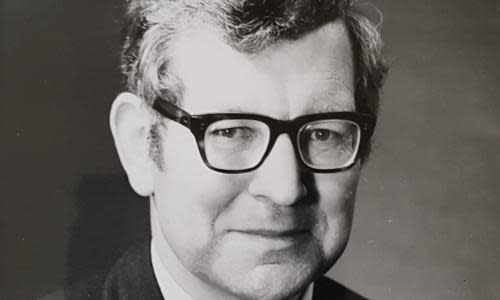Ervine Glenny obituary

My former colleague Ervine Glenny, who has died aged 97, was a materials engineer who, through his research and subsequent management of engineers at the National Physical Laboratory (NPL) and the Royal Aircraft Establishment (RAE), helped to pioneer the advent of jet engines and the use of carbon fibre composites to lighten aircraft and other structures.
He was born in Belfast, the son of Elizabeth (nee Ervine), a housewife, and Robert Glenny, a police constable. He was named Robert, but was always known by his middle name, Ervine. He was educated at Methodist college, Belfast, and won a bursary to study chemical engineering at Queen’s University in the city, where he met his wife to be, Joan Reid, who was taking the same course.
He began his research in 1947 with the National Gas Turbine Establishment (NGTE), which had just been formed from Power Jets, the company created by Frank Whittle, who invented the concept of gas turbines which form the basis of jet engines. By exploring the high temperature properties of materials suitable for gas turbines, Robert was able to contribute to their commercialisation and moved with NGTE to Farnborough, Hampshire, in 1955 to be close to the RAE, which specialised in all aspects of aircraft design.
In 1970, Ervine moved to the NPL in Teddington, south-west London, to become superintendent of the materials application division and in 1973 he moved back to Farnborough to become head of the materials department at RAE. Ervine’s advice was always sound and well balanced and his encouragement and support of all his engineers enabled innovations to be pursued and commercialised. These included high strength, lightweight carbon fibres and he encouraged Bill Watt and other colleagues to continue developing their invention and its application initially to aircraft but then to other forms of transport.
Upon his retirement from RAE, Ervine acted as a project monitor and assessor for the Department of Trade and Industry. One Sunday in 2003, Ervine and I travelled to Stansted airport to attend a project meeting in Prague. When Ervine showed his passport at the airline counter, the official said: “I am very sorry, Dr Glenny, but you have insufficient validity left on your passport so we cannot fly you to Prague.” In reply, Ervine uttered, without hesitation: “I am going to home to rejoin my 80th birthday party.”
This quiet, unassuming person helped, in his own way, to make transport lighter and more energy efficient, a legacy from which we are all benefiting.
Joan died in 2017. Ervine is survived by his children, Helen and Michael, and grandson, Jon.

 Yahoo Finance
Yahoo Finance 